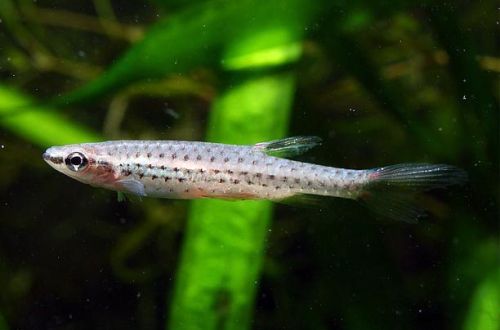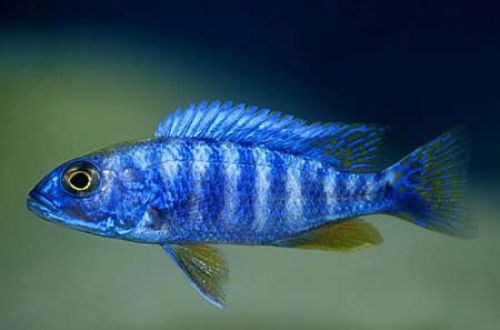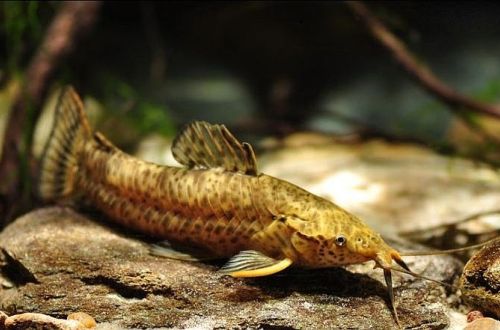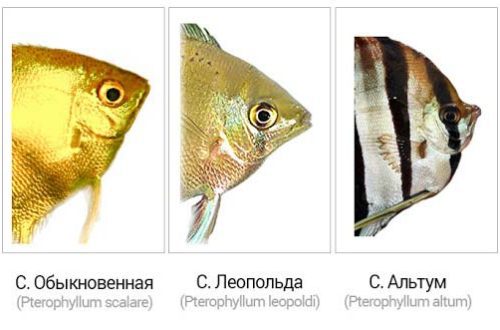
Copeina callolepis
Copella callolepis or Copeina callolepis, scientific name Copella callolepis, belongs to the Lebiasinidae family. The fish was singled out as an independent species only in 2011, before that, depending on the brightness of the body pattern, it was considered a variety of Kopeina Natterer or Kopell Meinke. It is popular in the aquarium hobby, although it is known under different names, but this does not affect the content and the degree of compatibility with other freshwater species.

Contents
Habitat
Comes from South America. The exact region of distribution is unknown, since the fish was not previously identified as a separate species. Probably found in the middle Amazon basin in Brazil, where it inhabits small streams and channels flowing through dense rainforest.
Brief information:
- The volume of the aquarium – from 50 liters.
- Temperature – 20-28°C
- Value pH — 4.0–7.0
- Water hardness – soft (1-9 dGH)
- Substrate type – sandy
- Lighting – subdued
- Brackish water – no
- Water movement is weak
- The size of the fish is up to 4 cm.
- Nutrition – any with a combination of live food with herbal supplements
- Temperament – conditionally peaceful, during the spawning period, males may show hostility
Description
Adults reach a length of about 4 cm. The color is silvery with a dark back. The body pattern consists of rows of red-black speckles. There is a large spot on the dorsal fin. Males, unlike females, are noticeably larger and brighter colored.
Food
An omnivorous species, in a home aquarium it will accept most popular foods of a suitable size. It is desirable that the diet consists of foods rich in protein, and also includes frozen or live foods such as brine shrimp, daphnia, small bloodworms, fruit flies.
Maintenance and care, arrangement of the aquarium
The optimal size of the aquarium for 8-10 fish starts from 50-60 liters, it is also acceptable to use a paludarium with a similar volume of water. Due to the nature of reproduction (more on this below), it is necessary to provide foliage hanging low above the surface in the design, as well as lower the water level so that it does not reach the edge of the tank by 10 cm or more.
Copella callolepis will look most harmoniously among dense thickets of aquatic plants and snags in subdued lighting conditions. A useful addition to the design will be the dried leaves of some trees, placed at the bottom. The leaves will act not so much as an element of decor, but as a means of giving the water a chemical composition that is characteristic of the natural habitat of this species of fish. When decomposed, the leaves release tannins into the water, which lower the pH and dGH values.
Successful long-term maintenance will depend on the provision of stable water conditions within the acceptable range of temperatures and hydrochemical values and the regularity of the aquarium cleaning procedures, as well as the smooth operation of the installed equipment.
Behavior and Compatibility
A peaceful agile fish, due to its small size it is compatible with a limited number of other species. It is necessary to avoid sharing with large and especially aggressive fish. Copeins prefer to be in a group of at least 8–10 individuals. During the mating season, the males will protect the clutch and at this time they become not too friendly neighbors in the aquarium.
Breeding / breeding
Fish are characterized by an unusual breeding strategy. With the onset of the mating season, males begin active courtship, occupying a small area near the surface and not allowing competitors to enter it. When one of the females accepts courtship, they form a temporary pair and start spawning. From this moment, the most amazing thing begins – the fish lay their eggs on the surface of a leaf above the water! Clinging to each other, the male and female jump out of the water and stick to the leaf for a few moments, managing to fix several eggs on it. In a few jumps, the clutch grows to dozens of eggs. At the end of spawning, the female swims away, and the male remains to take care of future offspring. With a sharp movement of the tail, he sprinkles water on the eggs to prevent them from drying out.
Fish diseases
The main cause of fish health problems are unsuitable conditions of detention, causing a weakening of the immune system and thereby increasing susceptibility to diseases. Read more about symptoms and treatments in the Aquarium Fish Diseases section.





